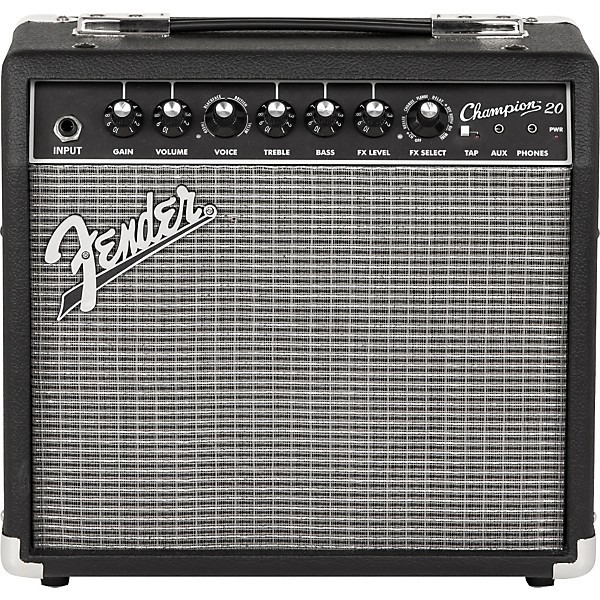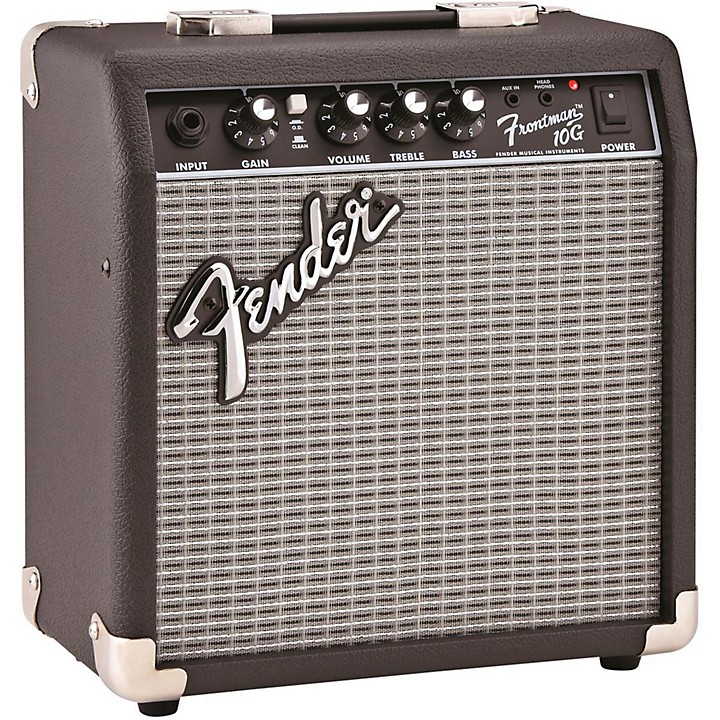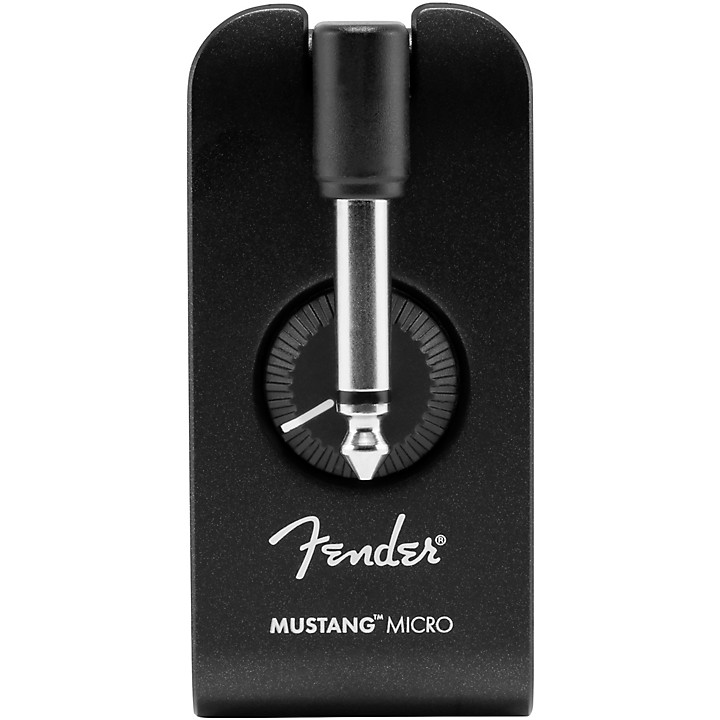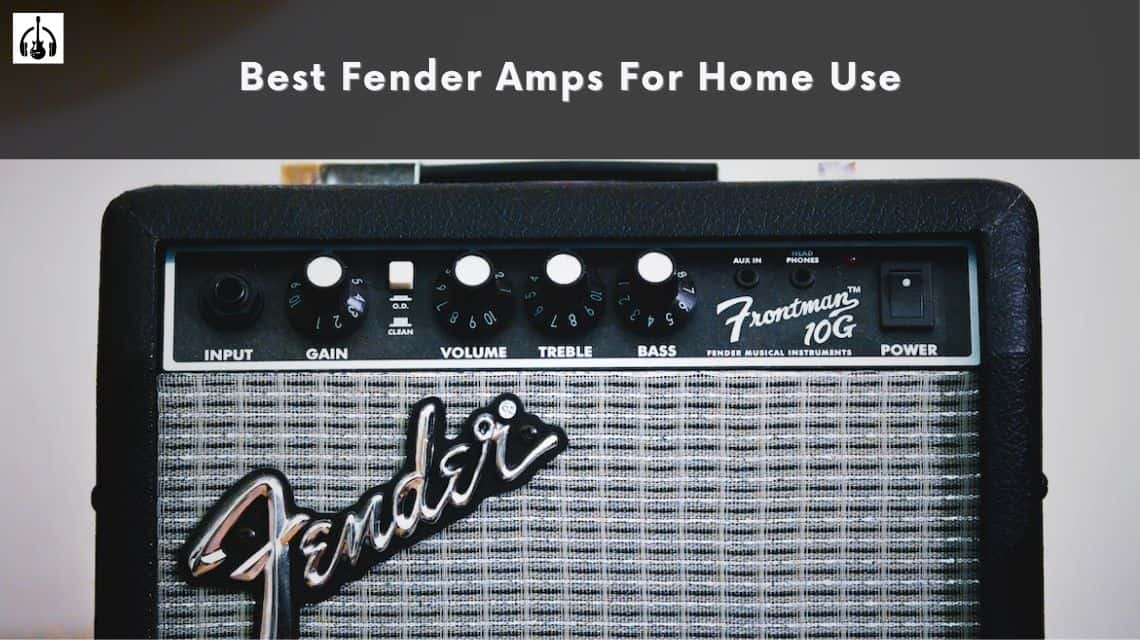I’ve tinkered with a lot of Fender amps in the past. And after thorough exploration and research, I’m excited to share my favorite picks with you!
As a fellow bedroom guitarist myself, I understand the importance of finding an amp that can deliver exceptional tone and versatility in a compact and practical package.
The number one choice in this lineup, the Fender Mustang LT25, is tailor-made for bedroom players. Its ability to capture that sought-after Fender sound at lower volume levels is simply outstanding.
And if you're looking for those authentic tube tones, my personal recommendation would the '65 Princeton Reverb guitar amp.
But wait, there’s more! I’ll also be discussing other fantastic options that cater to different musical styles and preferences.
So, keep reading to discover the best Fender amps for home use that’ll take your home playing to new heights!
Best Fender Amps For Home Use
| Image | Product | Details | Price |
|---|---|---|---|
 |
Fender Mustang LT 25 | Amp Type: Digital Wattage: 25 Watts Speaker: 1 x 8″ Weight: 15.8 lbs |
Check Price |
 |
Fender Champion 20 | Amp Type: Solid-State Wattage: 20 Watts Speaker: 1 x 8″ Weight: 12 lbs |
Check Price |
 |
Fender Frontman 10G | Amp Type: Solid-State Wattage: 10 Watts Speaker: 1 x 6″ Weight: 8.5 lbs |
Check Price |
 |
Fender ’65 Princeton Reverb | Amp Type: Tube Wattage: 15 Watts Speaker: 1 x 10″ Weight: 34 lbs |
Check Price |
 |
Fender Mustang Micro | Amp Type: Digital Wattage: N/A Speaker: Headphone Weight: 0.06 lbs |
Check Price |
Best Overall – Fender Mustang LT 25
The Mustang LT 25 is a very versatile and lightweight modeling amp as you’d expect from a top-notch Fender product. I find the 25 watts perfect for bedroom usage as well as small gigs.
You get 30 presets inspired by legendary tones from chart-topping hits and 25 different amp models to explore. This amp truly opens up a world of sonic possibilities. What’s more, the amp includes 25 effects that cover a wide range of tonal nuances, eliminating the need for additional pedals.
If you’re into recording your own music, the USB connectivity port is a game-changer. It enables you to connect the amp straight to your DAW.
Reflecting on my own musical journey, I can’t help but wish I had a Mustang LT25 during my early years. The amp’s 1/8″ headphone input provides a silent practice option, saving you from potential neighbor troubles or late-night jam sessions.
Additionally, the 1/8″ AUX input proves to be a valuable tool for honing improvisational skills and composing intricate solos and layered arrangements.
The built-in tuner is a nice little tool that potentially saves you from further investing.
Talking to a bunch of users, I have found that they had very little negative to say about this amplifier. However, a number of them pointed to one specific issue. Namely, the footswitch input only works with one footswitch model. To make things worse, that model only has one switch button. Effectively, you can only change between two different sounds. A bit of a shame for an amp with this number of sonic variants, right?
But apart from that, the Mustang LT25 is an ideal beginner amp, especially if you want lots of features and effects baked right into the amp. this is among the best Fender amps to buy now.
Pros:
- Huge library of sounds and effects.
- USB connectivity for easy recording and connecting to your DAW.
- Convenient headphone input for silent practice sessions.
- Lightweight and portable design.
Cons:
- Only works with one model of footswitch that has only one switch button.
- Limited control over individual effect parameters.
Runner-up – Fender Champion 20
As a seasoned guitar player, I know the importance of amps with simple controls, even after 16 years of playing. That’s why the Fender Champion 20 caught my attention. It strikes a perfect balance between simplicity and versatility.
With a variety of amp voicings like Tweed, Blackface, British, and Metal, this amp covers a wide range of tonal textures. You can easily dial in signature clean Fender tones or crank it up for modern high-gain riffing.
You have all the basic controls needed to shape your sound and get the best out of this amp, including:
- 2-band EQ
- Volume
- Gain
- Voice knob
- FX level
- FX select
The Champion 20 is an excellent practice amp, ideal for bedroom or hotel room jam sessions. Its headphone input allows you to rock out without disturbing your surroundings.
Plus, the built-in effects like delay, reverb, tremolo, and chorus add extra depth and color to your playing.
Just a heads up – Some users have mentioned that the power supply may not be of the highest quality, so it’s worth considering investing in a reliable power source to ensure the amp’s safety.
Pros:
- Versatile amp voicings (Tweed, Blackface, British, Metal).
- User-friendly controls for easy sound adjustment.
- Built-in effects (delay, reverb, tremolo, chorus).
- Auxiliary input for jamming with tracks.
- Headphones input jack for silent practicing.
Cons:
- Limited tone shaping (2-band EQ).
- Potential power supply issues.
- Footswitch not included, requires specific model.
Budget Pick – Fender Frontman 10G
Alright, fellow guitar enthusiasts, let me tell you about the Fender Frontman 10G, the little amp that could! Don’t be fooled by its affordable price tag, because this bad boy packs a punch.
First off, let’s address the elephant in the room — its design. Who said budget amps can’t look cool? This one breaks the mold, offering a surprisingly good-looking chassis for a sub-$100 amp. But remember, we’re not just here to judge by looks alone.
When it comes to features, the Frontman 10G may not have all the fancy knobs and switches of its high-end counterparts, but trust me, it’s got what you need.
With 10 watts of power, it’s perfect for honing your skills at home or even in a dorm room without causing a ruckus.
And did I mention it’s portable? Take it with you wherever your music takes you. Add into the mix the affordable price, and I see this one as my personal pick for bringing with me to hotel rooms while on tour.
You only get a modest 2-band EQ. But let’s keep things in perspective. We’re talking about a budget amp here, folks.
Now, let’s talk sound!
This little guy gets remarkably close to that classic Fender clean tone we all know and love. It may not have all the tonal versatility of its pricier siblings, but let’s be real, it still rocks. Whether you’re strumming chords or unleashing some tasty riffs, this amp will have you covered.
Oh, and here’s a bonus feature that caught my attention—the aux input. Picture yourself jamming along to your favorite tunes or practicing your solos with a killer backing track. The Frontman 10G makes it happen, my friends.
As with most of the amps in this category, this one also features a headphone jack. It’s definitely my favorite tool for silent practicing, bar none.
All in all, If you’re looking to buy a cool-looking, yet inexpensive amp, the Fender Frontman 10G would be a great option!
Pros:
- Affordable and budget-friendly.
- Compact and portable design.
- Simple and user-friendly controls.
- Classic Fender clean sound.
Cons:
- Limited tone-shaping options
- Few built-in effects
- Very basic EQ controls
Best Tube Amp/Premium Pick – Fender ‘65 Princeton Reverb
The ’65 Princeton Reverb is a stalwart of my guitar-playing career. This is THE amp that’ll ignite a spark of creativity when you’re recording in the studio or playing an unforgettable gig at a cozy jazz club with fellow musicians.
Its main draw for me was the classic tube sound. The main hallmarks of that sound are those rich harmonics and great sensitivity to dynamics in one’s playing.
The ’65 Princeton Reverb boasts a meticulous combination of preamp tubes (3x 12AX7 and 1x 12AT7), power tubes (2x 6V6), and rectifier tube (5AR4). These components work together to deliver a tone that oozes warmth, depth, and character.
But it’s not just about the sound!
The ’65 Princeton Reverb has this undeniable vintage charm that instantly transports you to another era. Its classic looks and iconic Fender grille cloth give it that authentic vintage vibe. It’s like having a timeless piece of music history right in front of you.
Now, I must admit, having only one channel isn’t ideal for some folks. It means cranking up the volume for that sweet overdriven sound, which isn’t always practical for home use. Well, fret not! You can always add some stompboxes to expand your tonal options.
On the plus side, having the classic 3-band EQ, along with speed and intensity controls, gives you the tools to sculpt your sound just the way you want it.
Fender knows how to nail the FX, and the ’65 Princeton Reverb is no exception. The built-in reverb and vibrato effects are absolute gems. Ever wondered how many legendary songs have those effects in them? A lot, I guess.
I also like that a footswitch goes with the amp. It features two switches that seamlessly toggle the reverb and vibrato.
Although it looks pretty beefy, it turns out that it’s not heavy at all. The fact that it’s lightweight contributes to the overall portability.
Pros:
- Classic tube sound with rich harmonics
- Versatile controls and tonal options
- Authentic vintage Fender reverb and vibrato effects
- Perfect for home, studio, and small gig use
Cons:
- Limited to one channel, not ideal for diverse tonal options.
- Requires higher volume levels for that juicy overdriven sound.
- May require additional pedals for additional effects.
- Higher price point.
Best Headphones Amp – Fender Mustang Micro
Headphone amps may be one of my favorite inventions in modern-day amp manufacturing.
Fender Mustang Micro is a great example of such an amp – An amp that you can carry in your pocket! Talk about portability, huh?
Now, get this: they’ve managed to squeeze in 12 amps and 13 effects into this tiny beast! It’s mind-blowing.
And the best part? No need for software control. Everything you need is right at your fingertips – amps, EQ, effects, the whole shebang!
Talking to some friends, they have all reported that the Bluetooth streaming feature is a real treat. In other words, you can broadcast the sound from your amp to various other sound devices to hear yourself playing.
Plus, with the USB-C interface, you can record your tracks directly in the studio. How cool is that?
Checking out the user reports, I have gathered that the battery life is 4 to 6 hours. But wait, there’s an onboard rechargeable battery. Amazing!
Tonally, the amp is highly versatile. All of the demos I’ve heard suggest that the scope of the amp covers anything from clean to high-gain sounds. All of the overdriven sounds in between are also there.
Not a huge factor for an old-timer like me, but there is an A/V sync option. That allows all of you TikTok guitarists to film your guitar content.
There are a couple of minor hiccups, though. The clean sounds can produce a fair amount of hiss when you try to really turn them up, which can be a tad bothersome. And unfortunately, it doesn’t play well with Bluetooth headphones, which is a bit of a letdown.
Pros:
- Pocket-sized.
- Allows for silent practice with headphones.
- Wide range of amp models and effects.
- Built-in tuner for convenience.
- Bluetooth streaming option.
- USB connectivity for easy recording and playback.
Cons:
- Controls and sound quality are not as good compared to larger amps.
- Not suitable for live performances or jam sessions.
- Limited power output for certain playing styles.
- Hissing reported while turned up.
- Non-compatible with Bluetooth headphones.
Final Verdict on Best Fender Amps for Home Use
Fender has been making some incredible amps over the last 70 years. Their modern-day output continues in the same tradition.
With this list, I have tried to represent my picks for the best amp in each given category.
The Fender Mustang LT25 and Champion 20 offer versatility and a range of tones, making them ideal for beginners and intermediate players looking to refine their skills at home. For budget-conscious guitarists or complete beginners, the Frontman 10G is a great buy.
For those seeking a classic tube-driven sound, the ’65 Princeton Reverb is a standout choice. Its rich harmonics and dynamic response make it a favorite among studio musicians and gigging guitarists in smaller venues. And in terms of portability, the Mustang Micro takes the crown.
If you liked this review, you’ll love some of the other gear guides that we’ve published.
Until next time!

I’m Pranshu. I’ve been a passionate guitarist, keyboardist, and music producer ever since I got my hands on a keyboard as a small child.
With Harmonyvine, my goal is to share tips and knowledge about music and gear with you. I also enjoy recording music and guitar covers, which you can check out on my Instagram page.






